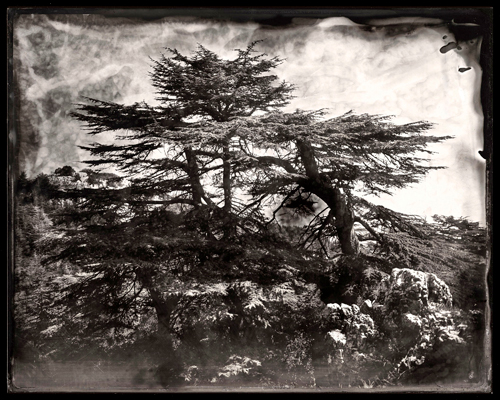|
|
|
Best Photograph
|
|
Jack Dabaghian
(Co-Winner)
Jack Dabaghian
|
|
 |
|
Maasser Cedars 417-F. 20x25 |
|
|
The monumental cedar tree stands resolutely, despite the passage of time. Overlooking the nearby hills and rocks, it is shown in gray hues, veiled in a smoky haze and punctuated by burned edges. The image appears like a historical relic from days long gone. Dabaghian’s photo presents itself as a contemporary work of art and paradoxically, an archival piece of documentation.
Watchful Eyes
Dabaghian calls the cedar trees ‘sentinels’, or the watchful guards of Lebanon. “They have seen foreign armies, pillaging around them. The armies left, leaving destruction in their wake, but the trees remain,” he states. The idea sparked when he was visiting the Shouf region for another project. Taken aback by the contrast between the living cedars trees and the surrounding debris, he says: “I’m very environmentally aware, and I noticed that the cedars seemed to be the only things left of nature’s beauty – whether by design or by accident.”
Vintage Technique
Dabaghian uses a 19th century photographic technique. The cedar photo is a tintype (also known as ferrotype), a wet collodion technique invented by Frederick Scott Archer in 1841. The picture is produced on a thin iron plate with a darkened surface, resulting in a flat, non-reflective finish. The method is costly, lengthy and requires a portable darkroom for development. “Everything needs to be developed on site,” he explains. Despite the technical and chemical constraints, he continues to use this technique for many reasons: First, to complement the subject matter, and second, to return to old processes that allow for exploration within the medium. Most importantly, Dabaghian considers himself a traveling photographer, like the nomadic artists of the 19th century that inspire him, such as Girault de Prangey and Gustave Le Gray.
|
|
|
|
|
|
|
|
|
© 2024 by InfoPro sal. All Rights Reserved
|
|
|
|